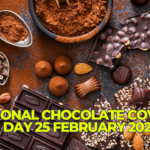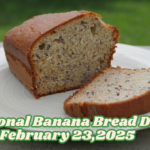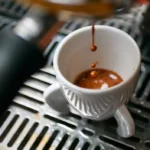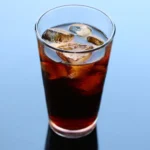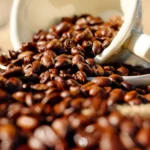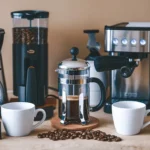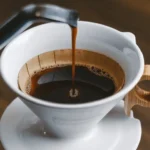It has been known that 64% of Americans drink at least one cup of coffee per day. In such a massive number of coffee drinkers, it comes as no surprise that home brewing has become an everyday routine for many. Nevertheless, even as brewing coffee at home is fast becoming a staple, most individuals are guilty of committing one or more errors that compromise their coffee’s taste and quality. Whether you are a new beginner just getting started or looking to perfect your morning brew, avoiding these common mistakes can make all the difference in your cup.
In this article, we will be discussing the top 5 mistakes to avoid when brewing coffee at home. With an understanding of these missteps and corrections, you will be able to brew coffee that tastes as good as, if not better than, what you get at your local coffee shop.
1. Old or Stale Coffee Beans
Why it matters: The freshness of your coffee beans is one of the most critical factors in brewing great coffee. Coffee beans begin to lose their flavor and aroma as soon as they are roasted, and over time, they become stale. Using old coffee beans can result in a flat, lifeless cup of coffee.
Learn How to Store Coffee Beans at Home
How to avoid it:
Fresh Coffee beans: Buy them fresh, or preferably from the local roaster. Look for a roast date on the bag and use it within 2 to 3 weeks from roasting time for the perfect flavor.
Store beans properly: Store your coffee beans in an airtight container in a cool, dark place, away from heat, moisture, and light. Do not store them in the fridge or freezer because beans can pick up moisture and odors.
- Tip: Grind your coffee just before brewing to preserve its flavor and aroma.
2. The Wrong Coffee Grind Size
Why it matters: The grind size of your coffee beans will have a direct effect on the extraction process. Too fine of a grind will lead to an over-extracted coffee that is too bitter. If it is too coarse, it may be under-extracted and lead to a weak, sour taste.
How to avoid it:
Adjust your grind according to the brewing method: Each brewing method requires a different grind size. Here is a quick guide:
- Espresso: Fine grind
- Pour-over: Medium grind
- French press: Coarse grind
- Drip coffee maker: Medium to fine grind
- Cold brew: Very coarse grind
Invest in a quality grinder: For consistent grind size, a burr grinder is the best. Blade grinders create uneven particles.
- Tip: If your coffee tastes bitter, your grind may be too fine. If it’s too weak or sour, try a coarser grind.
3. Water Temperature Incorrect
Why it matters: The temperature of water you use in brewing coffee affects the extraction of coffee grounds from the same. If the water is too hot, it causes over-extraction and bitterness in your coffee. If it is too cold, then the coffee gets under-extracted and tastes weak and sour.
How to avoid it:
Use water with a temperature that falls between 195°F and 205°F (90°C and 96°C): This is an ideal temperature, and if water is either more or less warm than this point, the end result will yield undesirable flavors when brewing coffee.
Use a thermometer: If there is no available thermometer, get the water as hot as a boil, take it off for 30 seconds then use it in brewing.
- Tip: If you’re using an automatic coffee maker, most models are designed to heat water to the optimal temperature. Just be mindful of the temperature when using manual methods like pour-over or French press.
4. Using Too Much or Too Little Coffee
Why it matters: The ratio of coffee to water is what will make or break the flavor. Too much coffee can result in an overpowering, bitter brew, while too little coffee can make the coffee taste weak and underwhelming. Finding that perfect balance is key.
How to avoid it:
Use the correct coffee-to-water ratio: A good starting point is 1 to 2 tablespoons of coffee per 6 ounces of water. Adjust according to your personal preferences, but that’s a good starting point.
Measure your coffee and water: Invest in a kitchen scale for measuring your coffee and water to achieve accuracy. It will make a difference every time you brew.
- Tip: Keep adjusting your ratio to find your optimal taste. Be not afraid to adjust for strength or flavor intensity.
5. Failure to Clean Equipment Frequently
Why it matters: Old coffee oils, grounds, and residue may accumulate on your brewing equipment and affect the flavor of your coffee. Coffee oils can go rancid and give your coffee an unpleasant taste, while the leftover grounds create bitterness.
Clean your coffee maker periodically: For a drip coffee maker and an espresso machine, use the manufacturer’s cleaning instructions. Be sure to clean the carafe, filter basket, and other removable parts.
- Clean your grinder: Coffee grinders should be cleaned every month or two depending on how frequently you use it. Use a soft brush to remove old coffee grounds, and grind some rice to help clean the burrs.
Descale your equipment: Mineral buildup from hard water can affect your coffee’s flavor. Use a descaling solution or a vinegar-water mixture to clean your coffee maker and espresso machine every 1–2 months.
- Tip: If you notice a bitter or stale taste, it could be a sign that your equipment needs cleaning.
Last Words
Home brewing of coffee does not have to be complicated, but avoiding the following common mistakes will ensure you get the best possible cup every time. Begin with fresh coffee beans, adjust your grind size for your brewing method, use the correct water temperature, measure your coffee-to-water ratio, and keep your equipment clean. With these simple tips, you’ll be well on your way to making coffee that rivals your favorite coffee shop.


